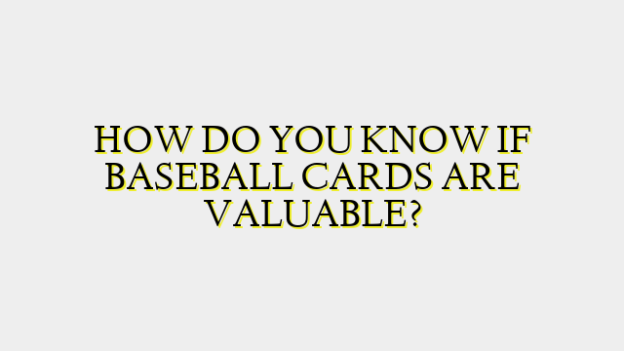There are a few key things to look for when determining if your baseball cards have significant monetary value. The most important factors that contribute to a card’s worth are its age, condition, player featured on the card, and for older cards – the card’s scarcity and demand from collectors. Let’s break down each of these components in more detail:
Card Age
Generally speaking, the older the card the more valuable it will be. This is because older cards are rarer since less were printed decades ago. The golden eras for valuable baseball cards are the pre-war era from the late 1880s-1940s, and the classic 1952-1986 era. Cards from the 1980s onward need to feature star players to have strong value. The earliest documented baseball cards date back to the late 1860s but are exceptionally rare. Most collectors see the 1886-1889 N172 Old Judge tobacco cards as the first “modern” design baseball cards.
Condition
A card’s state of preservation, called its grade or condition, hugely impacts its worth. Near mint or mint condition examples of older cards can be extremely valuable, while well-worn cards lose much of their collectability and price. When grading cards, aspects examined include centering (how perfectly centered the image is on the card), corners (are they sharp or rounded), edges (are they frayed), and surface (is it clean and intact or scratched). Top-rated condition grades from professional grading services like PSA or BGS can increase a card’s value exponentially compared to a lower graded version.
Player Featured
Naturally, cards showing baseball’s biggest stars tend to command the highest prices. Iconic rookie cards or cards highlighting milestone achievements are particularly sought after for legendary players. Examples include the 1909-11 T206 Honus Wagner, the 1952 Topps Mickey Mantle rookie, and the 1975 Topps Nolan Ryan no-hitter card. Even cards of lesser known players can gain value if the player had a unique career path or achievement. Condition is still key – a beat-up card of even the most famous player will have limited appeal to collectors.
Rarity
How many of a specific card were produced impacts its collectability. Especially for vintage cards, low print runs mean some versions are extremely scarce. Set the card came from and any variations in design/statistics listed also factor in. The scarcer a card version is documented to be, usually the more expensive example of that card will sell for to dedicated collectors trying to complete their collections. Rarity depends heavily on production numbers decades ago, so research is needed to determine where an older find sits on the spectrum of known surviving copies.
Demand
Simply put, if there is strong interest amongst collectors then demand and aftermarket prices for a card will remain steady or increase over time. Iconic legendary players never lose popularity and high-grade early cards showcasing them are always in demand. Even less heralded players can spike in demand if they have a career resurgence later in life that inspires renewed collecting interest. Certain themed or design focused subsets also draw enthusiastic collector followings that maintain demand.
Hope this breakdown provides useful background knowledge on how to identify signs that a baseball card you come across may have significant collectible value for resellers or long-term collectors! Factors like age, condition, player, rarity and demand all play key roles. With experience, one develops an eye for stands out candidates worth further research. Let me know if any part of the valuation process explanation needs extra clarification.




